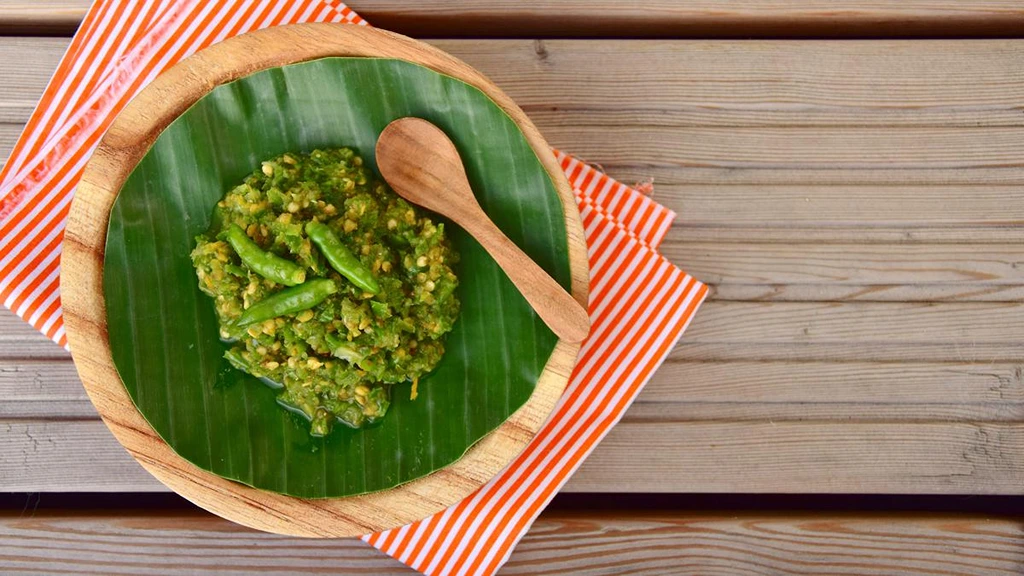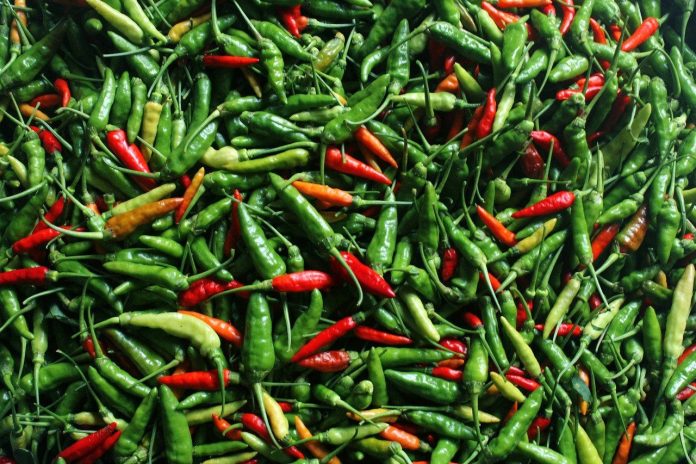If you’ve ever indulged in Indonesian cuisine, you’ve likely encountered the fiery and flavorful Cabe Rawit, also known as bird’s eye chili. This petite but potent chili variety holds a special place in the hearts and palates of Indonesians.
Cabe Rawit (Capsicum frutescens) or Bird’s Eye Chilli, is a fruit and plant belonging to the Capsicum genus whose fruit grows upwards. The color of the fruit is small green when young and dark red when ripe. When pressed, the fruit feels hard because there are so many seeds. This chili is difficult to separate from street snacks, namely fried foods or gorengan, usually eaten with raw young green bird’s eye chilies.
It can be eaten in all different stages of maturity, and it may taste different depending on its ripeness. Green chili is slightly on the bitter, grassier side and has a sharper, snappier, more biting heat. Fully red means that the chili is fully ripened. This red chili has a mellower, fruitier, and lasting heat.
Originally brought to Indonesia and across Southeast Asia in the 1500s by Portuguese sailors, the chili pepper is now used extensively in many Asian cuisines. In Malaysia and Singapore, it is called cili padi, in the Philippines silinglabayo, and in Thailand phrik khi nu. In Kerala, India, there is a traditional dish that uses cabe rawit and is called kanthari mulagu.
HOW SPICY IS GREEN BIRD’S EYE CHILI?
The scale used to measure the heat level of chilis is the Scoville scale. The number on the scale represents the concentration of capsaicinoids within different types of chili pepper. Capsaicinoids are the component of chili peppers that cause a burning sensation.
Bird’s eye chili measures 50,000-100,000 Scoville units. To put this in perspective, jalapeno is 2,500-10,000 Scoville units while habaneros range from 100,000 to 350,000 Scoville units. This means that the bird’s eye chili is up to 10 times hotter than jalapeno and similar to a mild habanero. In Indonesia, bird’s eye chili is considered a medium-high spicy level.
Here’s why Cabe Rawit is considered a favorite in Indonesia:
1. Spice and Flavor: Cabe Rawit is beloved for its intense spiciness. It adds a kick to Indonesian dishes, making them more exciting and flavorful. The combination of heat and a slightly fruity, tangy taste makes it a favorite among those who enjoy spicy food.
2. Versatility: Cabe Rawit is a versatile chili that can be used in a wide range of Indonesian dishes. It’s a key ingredient in sambals (chili pastes or sauces), curries, soups, stir-fries, and even traditional snacks and street food. Its adaptability allows it to complement various regional cuisines in Indonesia.
3. Traditional Dishes: Indonesian cuisine features numerous iconic dishes that rely on Cabe Rawit for their signature spiciness. Nasi Goreng (fried rice), Rendang (spicy beef stew), Soto (soup), and Ayam Goreng (fried chicken) are just a few examples of dishes that often include Cabe Rawit.

4. Sambal: Cabe Rawit plays a crucial role in sambal, a spicy condiment that is a staple in Indonesian cuisine. There are countless variations of sambal, and many of them feature Cabe Rawit as a primary ingredient. Sambal is a flavorful accompaniment to rice, meat, vegetables, and more.

HOW TO CHOOSE
If you notice any signs of rotting, including soft or dark spots, you should throw them out. Fresh chili peppers should be shiny and firm to the touch. There should be no wrinkles or discolorations before storing.
HOW TO STORE
If you plan to use them soon, you can keep fresh cabe rawit at room temperature for a few days. Place them into paper bags and keep them in a cool dark place, such as your pantry.
You can also store them in the refrigerator for up to 2 to 3 weeks. Do not wash the peppers before storing them. It is best to keep them dry because moisture can speed up the rotting process.
If you plan to freeze them, wash them and you can store them whole or cut. They will last for up to 6 months in the freezer. Place them in an airtight freezer container or ziplock bag. Fill the containers as full as possible or remove as much air as possible to retain their freshness longer.
Chili peppers are also great to dry. You can exactly use dried chilies exactly the same in recipes as you would do fresh ones. Place on a plate or a wire rack in a dry, well-ventilated room. You can also string the chilies up on string or thread and hang them to dry. Within several weeks, you will have dried chili peppers.
CABE RAWIT IS GOOD FOR YOU
Not only do they taste great, but bird’s eye chili peppers are also healthy! Sure, your eyes may water after that first bite, but capsaicinoids add spice along with plenty of health benefits.
Digestion Support: Capsaicin has plenty of positive effects on the digestive system. It increases the fluids in the stomach while inhibiting acid and enzyme production and improving digestion.
Weight Management: Spicy foods can increase your energy expenditure, which allows you to burn calories quicker.
Cholesterol and Blood Pressure Regulation: Capsaicin is also known to lower blood cholesterol levels while not affecting HDL cholesterol (aka the “good” cholesterol that absorbs the bad stuff).
Cabe Rawit is not just a chili pepper; it’s a symbol of Indonesian culinary excellence. Its fiery nature and ability to elevate the flavors of traditional dishes have earned it a cherished place in Indonesian kitchens. Whether you’re a spice aficionado or someone new to fiery cuisine, Cabe Rawit is a delightful component of Indonesia’s rich culinary tapestry that you’re bound to savor during your culinary exploration of the nation.






